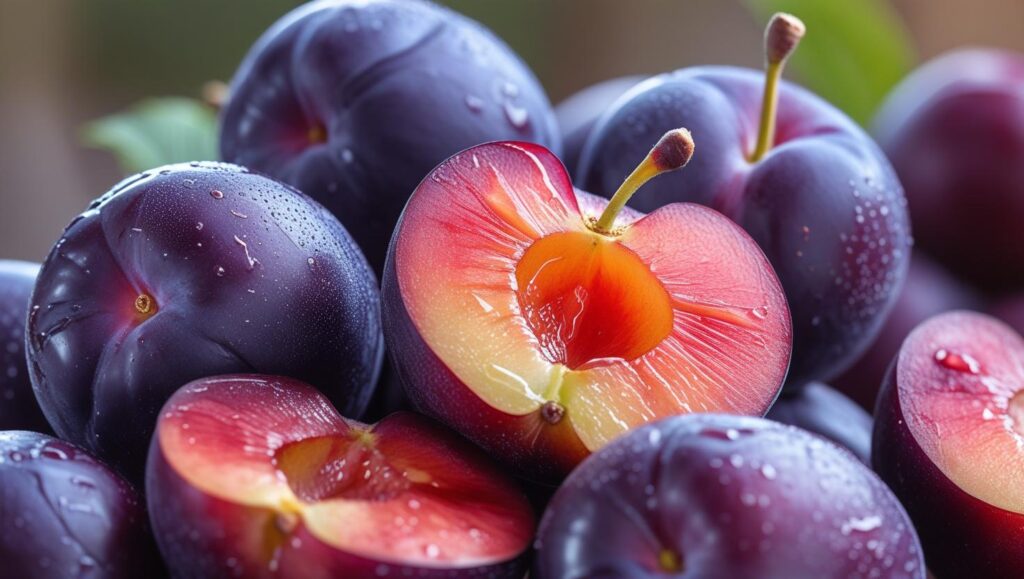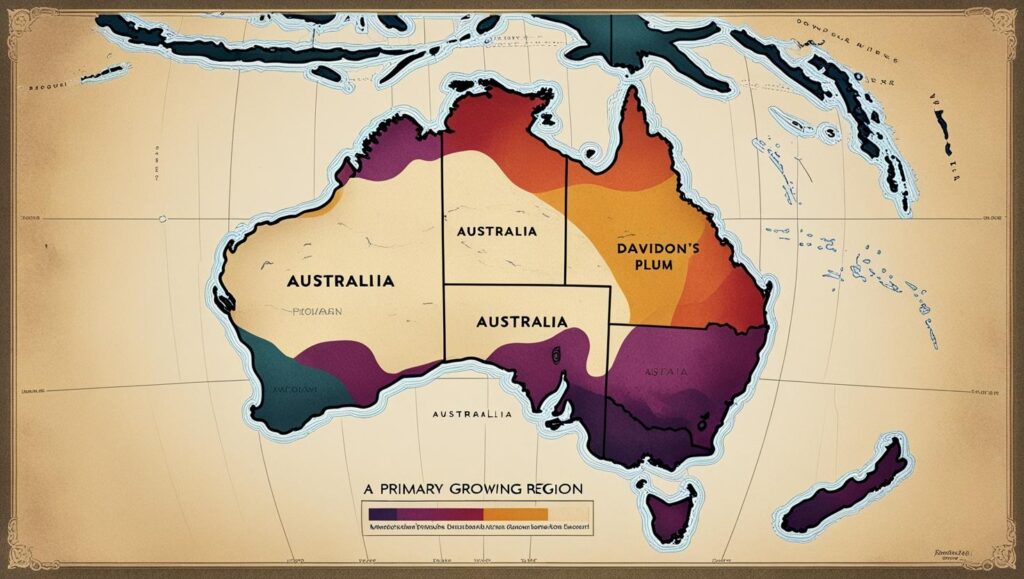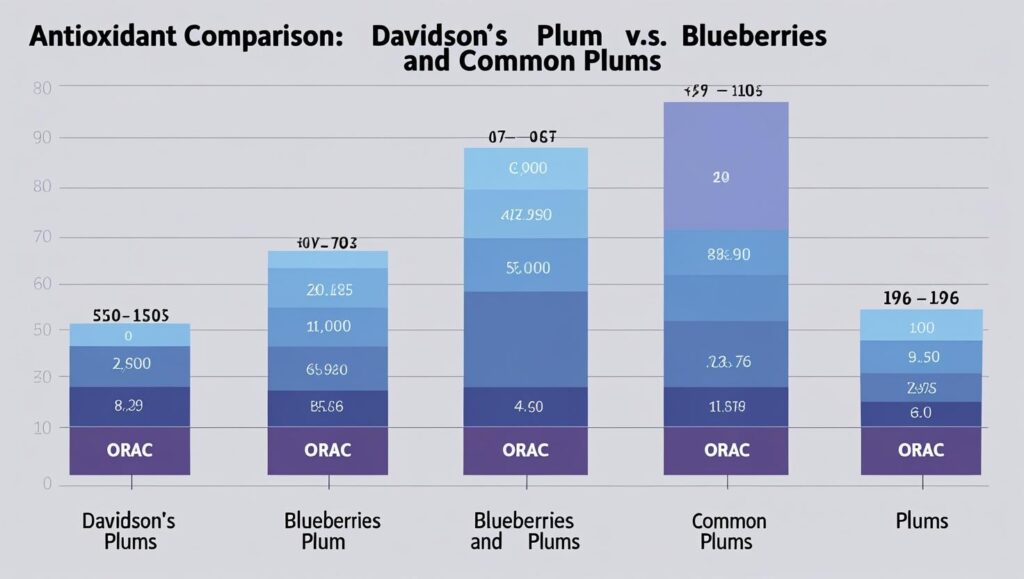In the burgeoning global market for unique and nutrient-dense foods, one country stands as the undisputed largest producer of the Davidson’s plum: Australia. This intensely tart, deep-purple native fruit, grown almost exclusively in the country’s eastern rainforest regions, is gaining international acclaim in culinary and wellness circles, creating a niche but expanding agricultural sector.

Australia is the sole commercial producer of Davidson’s plum, a fruit botanically distinct from the common plum, with an estimated annual harvest of 150 to 250 metric tonnes. This “bush tucker,” or traditional Indigenous food, is now a sought-after ingredient, prized for its sharp flavor and remarkable health properties, driving growth in a market that extends from gourmet kitchens to nutraceutical product lines.
From Rainforest Floor to Global Plate
The Davidson’s plum, belonging to the genus Davidsonia, comprises three species native to the subtropical and tropical rainforests of Queensland and New South Wales. The two primary species underpinning the commercial industry are Davidsonia jerseyana, often called the Mullumbimby plum, and Davidsonia pruriens, or the Queensland Davidson’s plum.
Unlike conventional plums (Prunus), which grow on sprawling trees, the Davidson’s plum is a slender, palm-like tree that distinctively fruits along its trunk. For millennia, Indigenous Australians have harvested the plums as a food source and for medicinal purposes.
“The Davidson’s plum has been a staple for Indigenous communities for thousands of years,” said a spokesperson for the Northern Australia Aboriginal Kakadu Plum Alliance Cooperative Limited (NAAKPA), which also works with other native bushfoods. “Its sustainable development represents a significant opportunity for economic and cultural reconnection for Aboriginal enterprises.”
While the native food industry’s farmgate value was estimated at approximately $21 million annually in a 2020 market study, Indigenous-owned enterprises currently represent less than 15% of producers. However, there is a growing movement to increase First Nations participation and ensure benefits flow back to the communities that have stewarded these plants for generations.

The Science Behind the Superfruit
The surge in demand for the Davidson’s plum is largely attributable to its exceptional nutritional profile. Research from various Australian universities has highlighted the fruit’s potent antioxidant capacity, which is significantly higher than that of blueberries, a commonly cited superfood.
A review published on ResearchGate focusing on Australian native plums notes that the Davidsonia jerseyana species possesses a remarkably high total polyphenolic content. These compounds, particularly anthocyanins which give the plum its rich colour, are linked to numerous health benefits.
“Davidson’s plum is an antioxidant powerhouse,” explained Dr. Lindsay Brown, a researcher who has studied the fruit at the University of Southern Queensland. Studies have investigated its potential anti-inflammatory and anti-diabetic properties, as well as its capacity to reduce risk factors associated with metabolic syndrome. The fruit is also a source of potassium, magnesium, calcium, lutein, and Vitamin E.
This potent nutritional makeup has made it a valuable ingredient in:
- Functional Foods: Freeze-dried powders are added to smoothies, health bars, and breakfast bowls.
- Nutraceuticals: Extracts are used in dietary supplements and health tonics.
- Cosmetics: Antioxidant properties are leveraged in skincare for anti-aging and skin health products.
A Niche Crop with Growing Pains
Despite its rising popularity, the Davidson’s plum industry remains a niche sector. Cultivation is concentrated in the hands of a few larger growers and numerous small-scale farms in its native habitats of northern New South Wales and Queensland.
The fruit’s intense, sour taste—often described as reminiscent of stewed rhubarb with a sharp tartness—makes it unsuitable for eating fresh for most palates. Consequently, nearly the entire commercial harvest is processed into purees, powders, sauces, and concentrates. This value-added approach is where the fruit’s economic potential is realized, supplying food manufacturers producing jams, yogurts, sauces for meats, and even craft beers and gins.
Growers face several challenges. The trees have specific climatic needs, and some species, such as Davidsonia jerseyana, are listed as endangered in the wild due to habitat loss. This has placed a strong emphasis on sustainable farming practices and conservation efforts among commercial cultivators.

The Future of a Uniquely Australian Fruit
As Australia is essentially the exclusive global supplier, the future growth of the Davidson’s plum market is intrinsically tied to the country’s ability to scale up production sustainably. The export market for processed plum products is expanding, particularly to health-conscious consumers in Asia, Europe, and North America.
“There is no other country with commercial-scale plantations of Davidson’s plum,” a report from industry observers noted, citing the fruit’s strict growing requirements and its endemic status as natural barriers to international competition.
The trajectory of the Davidson’s plum from a wild-harvested bushfood to a globally recognized functional ingredient is a testament to its unique appeal. As research continues to uncover its health benefits and chefs innovate with its bold flavour, this Australian native is poised for continued growth on the world stage, with its roots remaining firmly planted in Australian soil.
The Guava Farming: India’s Dominance and Global Cultivation Trends
